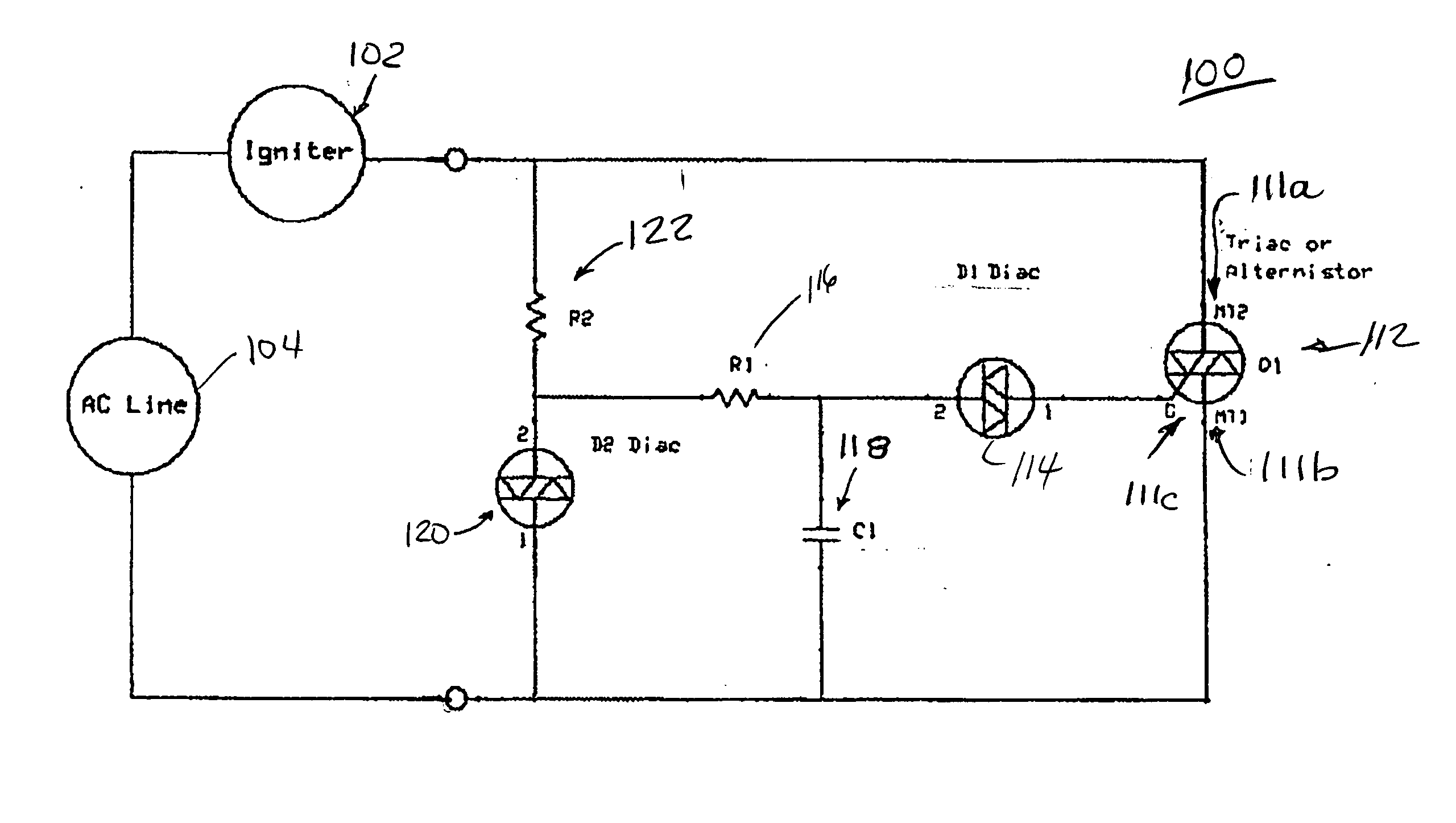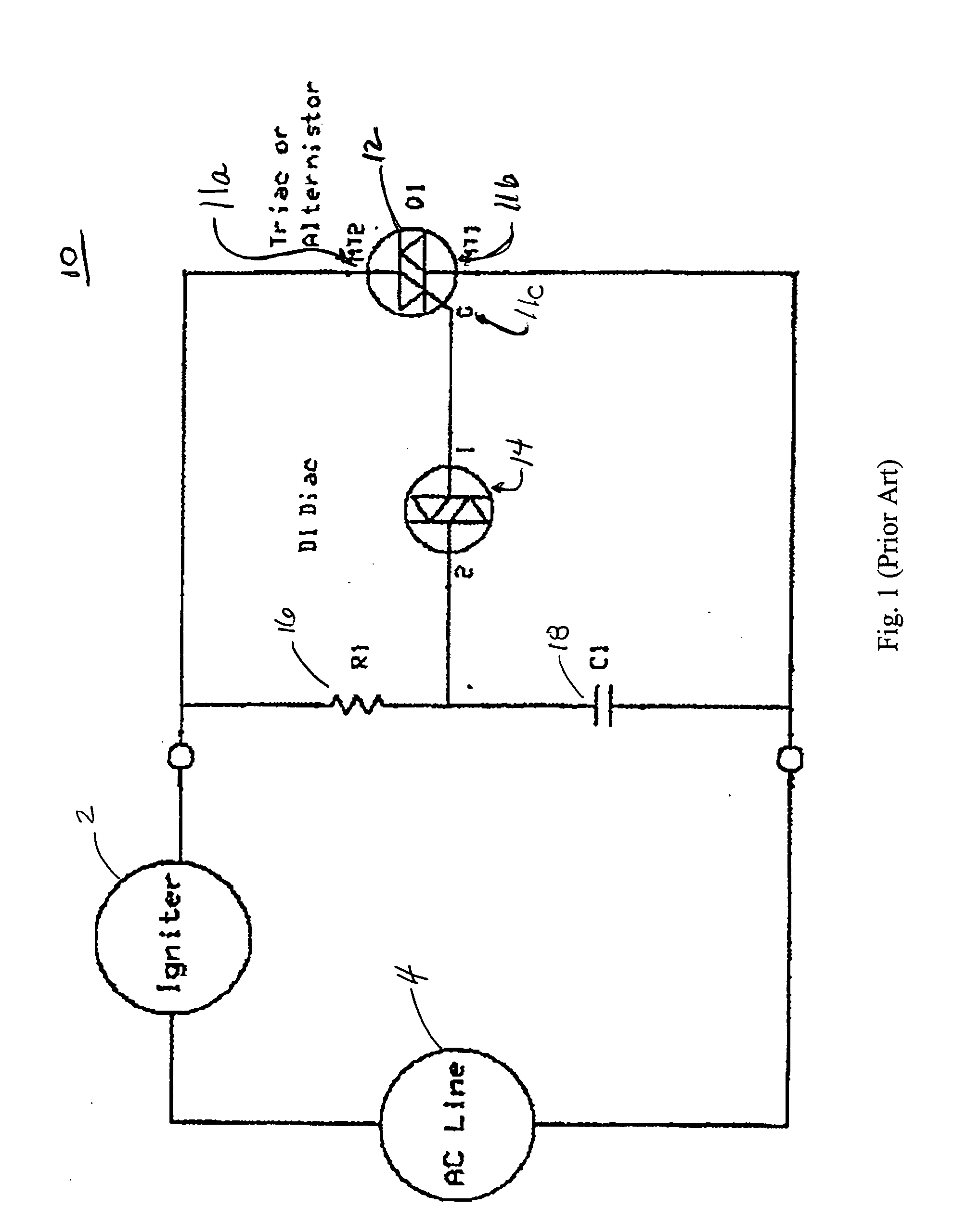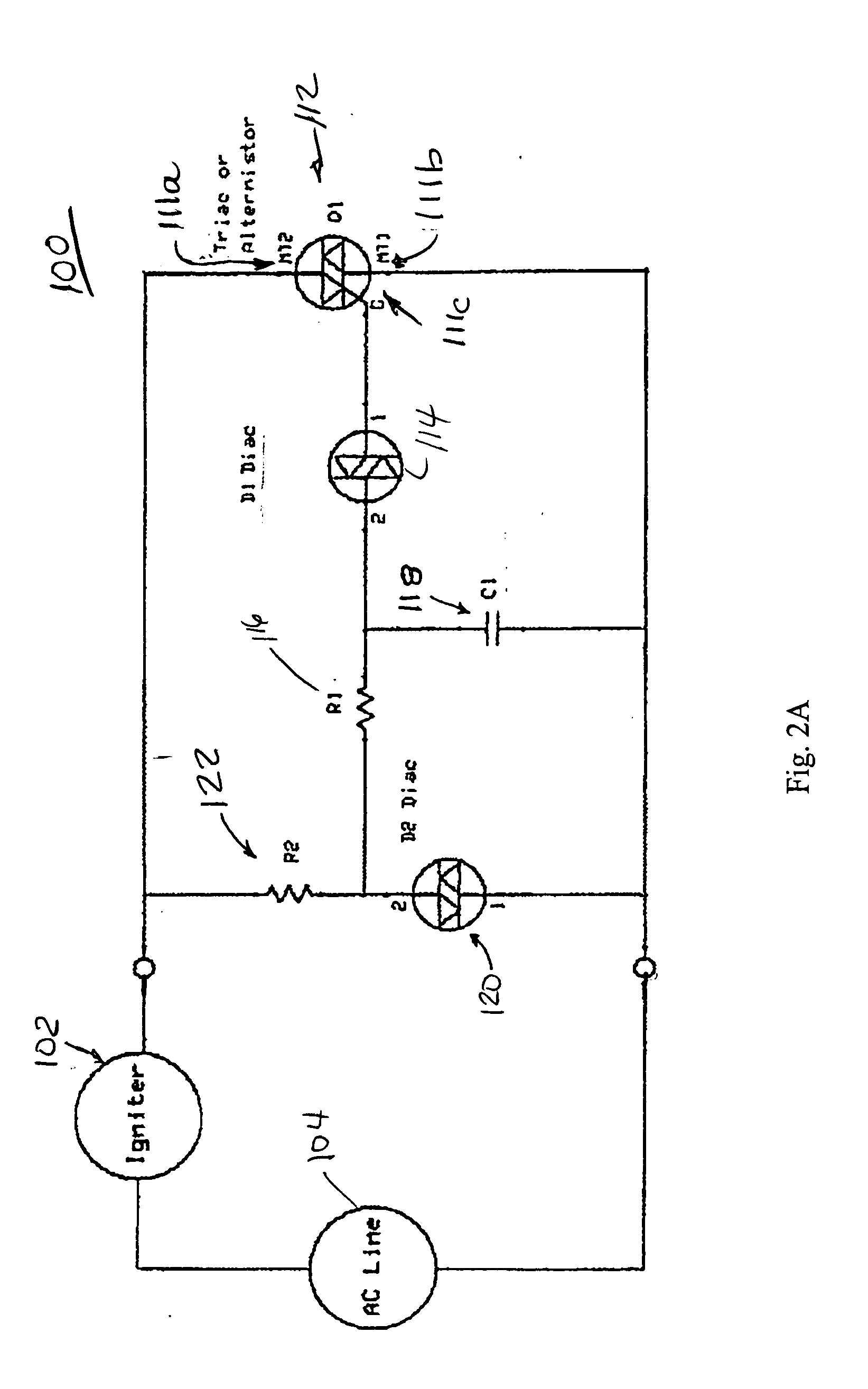Igniter voltage compensation circuit
a voltage compensation circuit and ignition circuit technology, applied in the field of circuits, can solve the problems of electrical and physical noise produced by the spark, hot surface-type ignition circuits, and require significant ignition/warm-up time, and achieve the effect of convenient switching
- Summary
- Abstract
- Description
- Claims
- Application Information
AI Technical Summary
Benefits of technology
Problems solved by technology
Method used
Image
Examples
Embodiment Construction
[0048]In one aspect of the present invention, the present invention features an igniter control circuit 100 that reduces the line voltage to an igniter 102 and which maintains the igniter voltage relatively stable. More particularly, there is featured a thyristor-based phase control circuit that reduces the RMS voltage being applied to an igniter 102 when it is connected to the AC line 104 or line voltage. Such an igniter control circuit 100 also is configured so that it opposes changes in line voltage such that the igniter voltage remains relatively stable when the line voltage increases or decreases relative to its nominal level.
[0049]Referring now to the various figures of the drawing wherein like reference characters refer to like parts, there is a shown in FIG. 2A a schematic view of a thyristor-based phase control circuit 100, more particularly a Dual-Diac thyristor-based phase control circuit, for an igniter 102 according to the present invention. Such a control circuit 100 r...
PUM
 Login to View More
Login to View More Abstract
Description
Claims
Application Information
 Login to View More
Login to View More - R&D
- Intellectual Property
- Life Sciences
- Materials
- Tech Scout
- Unparalleled Data Quality
- Higher Quality Content
- 60% Fewer Hallucinations
Browse by: Latest US Patents, China's latest patents, Technical Efficacy Thesaurus, Application Domain, Technology Topic, Popular Technical Reports.
© 2025 PatSnap. All rights reserved.Legal|Privacy policy|Modern Slavery Act Transparency Statement|Sitemap|About US| Contact US: help@patsnap.com



